The English Football League pyramid is one of the most competitive in world football.
The sheer depth of clubs and the support that those clubs attract, even in the lower leagues, is the envy of most of the footballing world.
As a result, competition to win entry into the top four tiers of English football is fierce, but it also throws up some interesting names as new teams gain exposure in the Football League or established names rise again, having previously fallen into the non-league structure.
Harrogate Town is one of the most exciting teams to have been promoted to the Football League in recent seasons.
When they were promoted to League Two at the end of the 2019/20 season, it was via a playoff victory, and they claimed their place in the top four tiers for the first time in their history.
Since that point, Harrogate have been going from strength to strength despite having a relatively low budget.
The club is managed by Simon Weaver, a 44-year-old former journeyman player who took charge of the club in the 2008/09 season when they were still in the Conference North, a tier below the National League, as he took up a player-manager role.
Interestingly, after Weaver took charge of the club, his father, Irving Weaver, became chairman.
However, there is no question of nepotism at the club, as Simon Weaver has led Harrogate to new heights through progressive and exciting football.
Indeed, at the time of writing, Harrogate sit in 10th place, but they are within striking distance of the playoffs.
This is an even more impressive achievement when we consider the size of the club and, indeed, the size of its budget compared to some of the other clubs around it.
We believe that Simon Weaver tactics will continue to impress through 2022, and in this data analysis, we will examine the numbers behind Harrogate Town AFC‘s impressive performance this season.
Harrogate Town xG and XGA Analysis
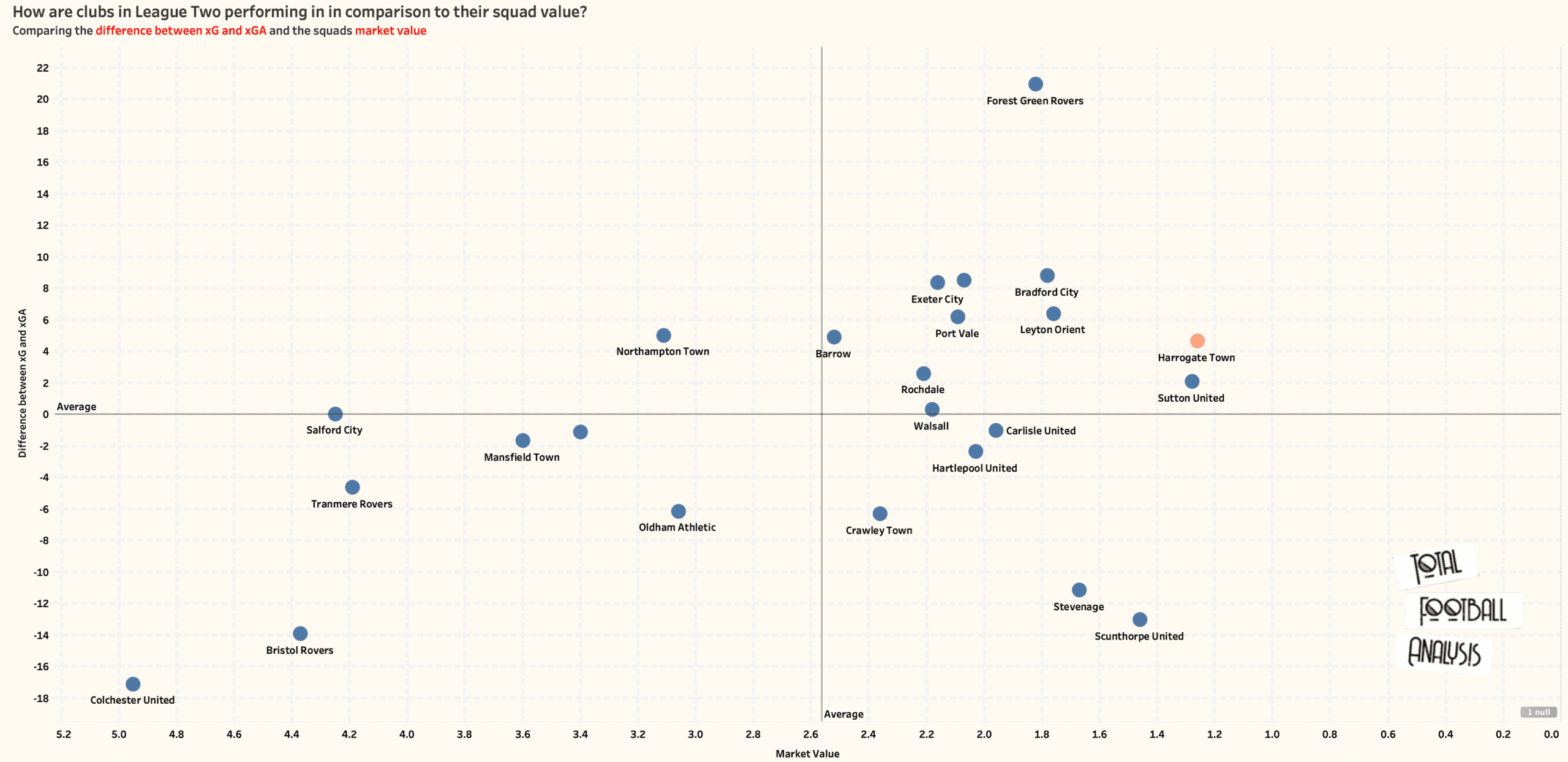
To start with, we will look at how each side in League Two has been performing in terms of expected goals and expected goals compared to their squad values.
We are using expected goals data as it provides a more complete picture of a team’s underlying performance than just using their goals scored and conceded.
Expected goals data also takes a lot of luck out of the equation and is more stable.
We are using squad value data from Transfermarkt. As you can see from the graph, the x-axis has been reversed so that the sides with the lowest squad values in the league are aligned to the right of the graph.
Straight away, the performances of Harrogate compared to their squad value start to stand out.
They have the lowest squad value in the league at £1.26M but are outperforming a plethora of other sides in the division who have notably bigger budgets.
When comparing their xG and xGA, they have a positive value of 4.65, meaning that they are performing well. As we will see later in this article, this translates into what we could expect to see from their league position.
It is a mark of a talented manager or coach to be able to maximize the performance of a playing squad without necessarily spending a great deal of money.
This is undoubtedly the case with Simon Weaver and Harrogate in this instance.
Harrogate Town Analysis Phase Analysis
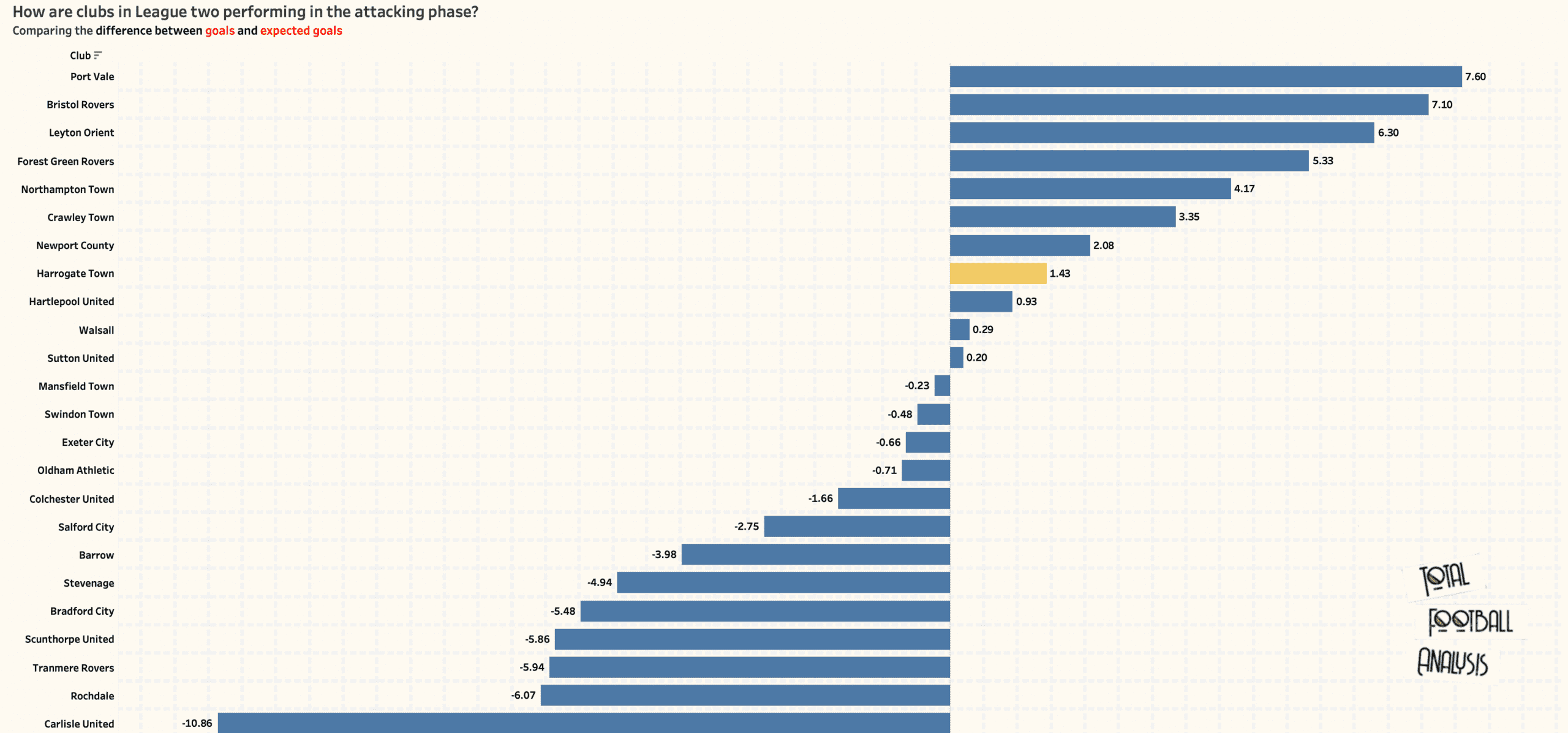
Next, we will start to drill down a little bit more and examine Harrogate’s performance in the attacking phase by examining the relationship between their goals tally and their expected goals tally.
As you can see from this graph, Harrogate are outperforming their xG by 1.43 goals, a number that is not likely to be unsustainable over the rest of the season but is still a positive indicator in these situations.
At the time of writing this report, Harrogate are averaging 10.03 shots per 90 and 13.38 touches in the opposition penalty area per 90.
Neither of these is outstanding compared to the rest of the league, but again, they are positive returns that are likely to be sustainable.
Harrogate Town Defensive Phase Analysis
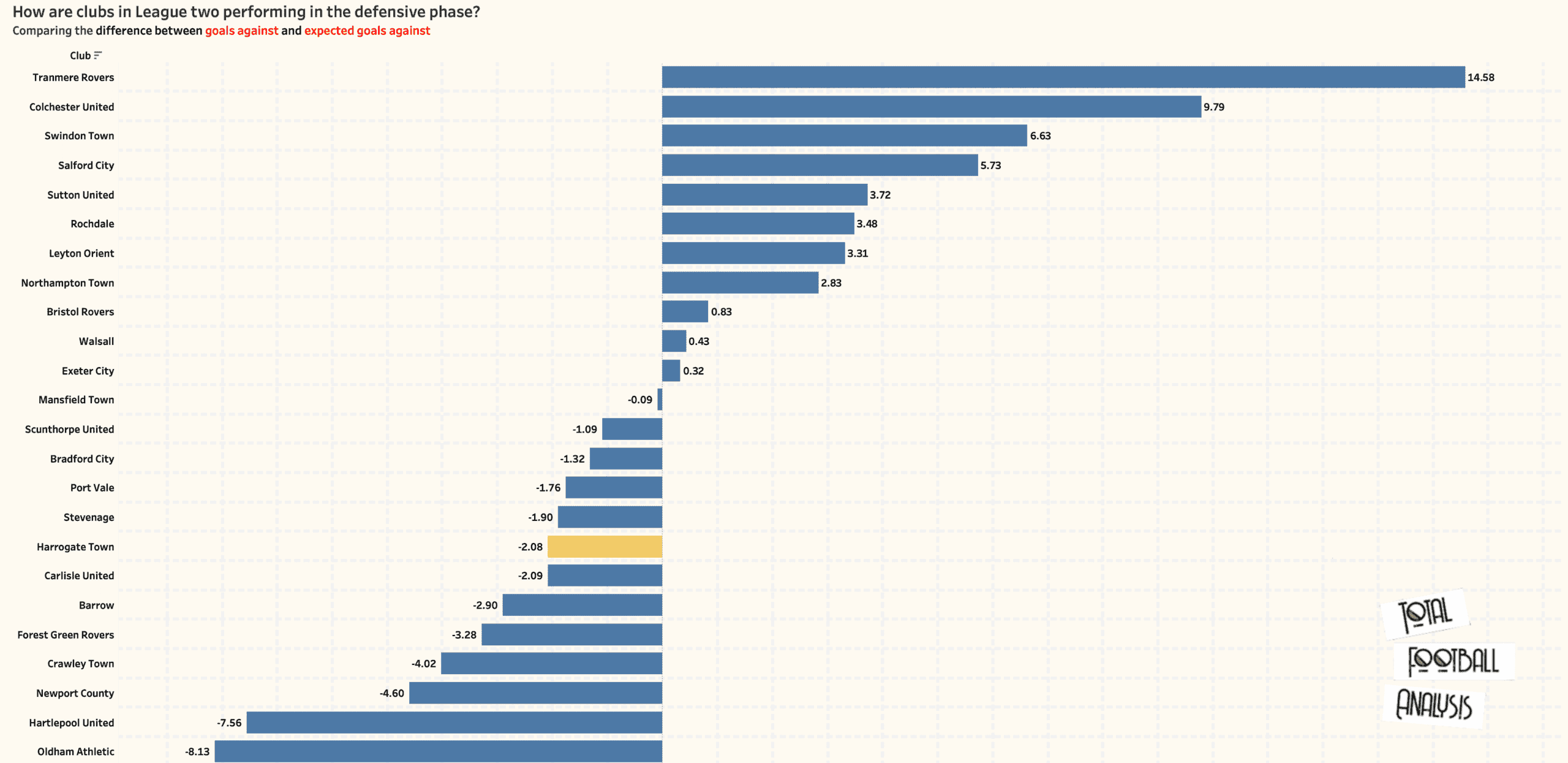
Next, we will examine their defensive performances over the course of the 2021/22 season in more depth, comparing the goals conceded so far with their expected goals against total.
In this instance, Harrogate are actually underperforming slightly having conceded 2.08 goals more than their expected goals against.
Once again, however, the key here is not to have the number be too far outside the expected output.
A difference of 2.08 goals is manageable over the course of the rest of the season.
The likes of Oldham Athletic and Hartlepool United, however, should be more concerned.
Harrogate Town xG Analysis
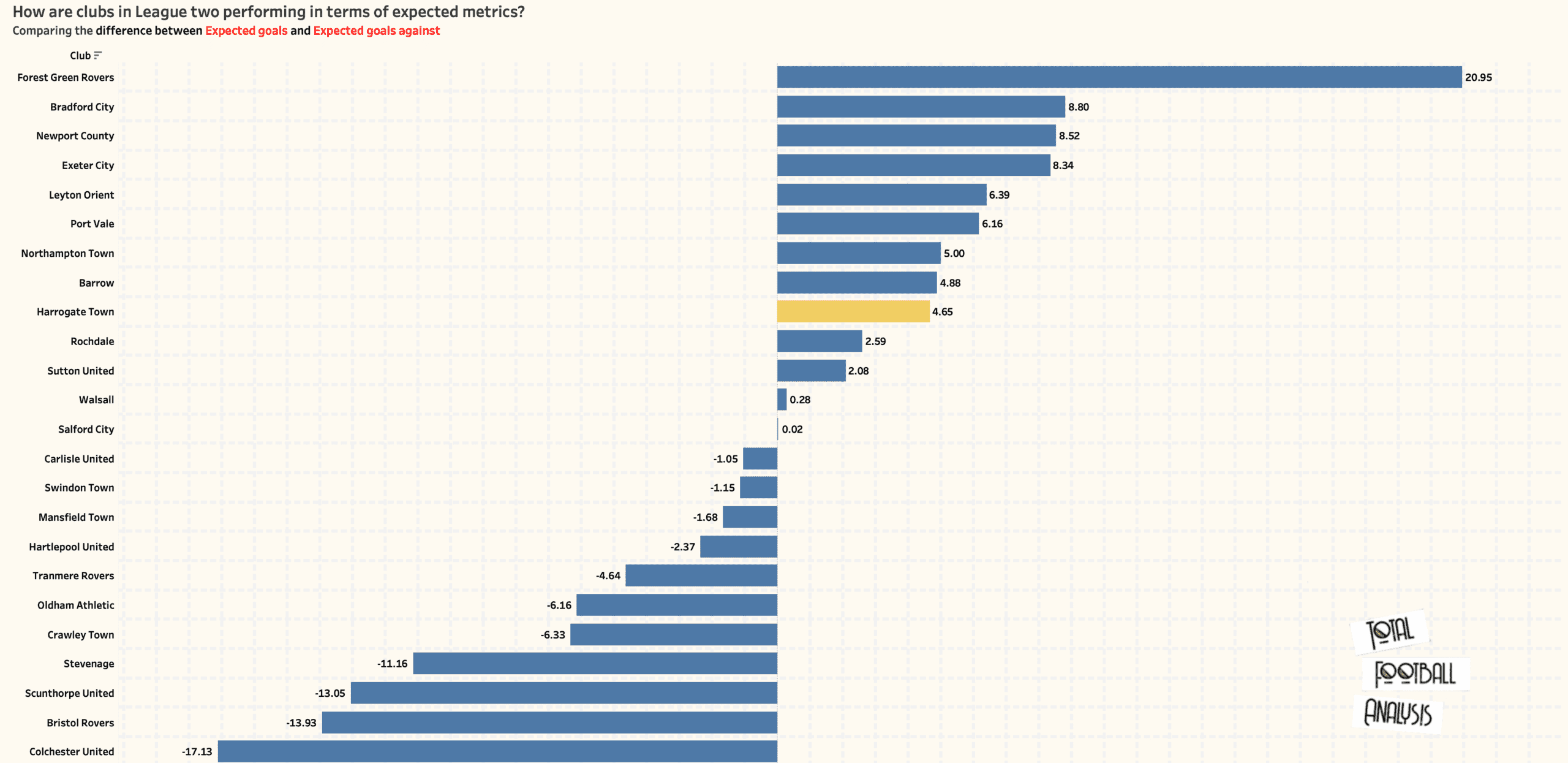
Finally, when looking at expected goals data, we will compare all sides in League Two’s expected goals and expected goals against.
Once again, you want to be sitting on the positive side of the graph across the course of a season to ensure you get a positive league position.
So far this season, Harrogate have been expected to score 4.65 more goals than they are expected to have conceded.
Again, this is a positive return for the side, who remember, are playing with a much lower squad value than the competition. Once again, this is likely to be sustainable across the course of the whole season and not just a short-term blip in terms of performance.
Harrogate Town PPDA Analysis
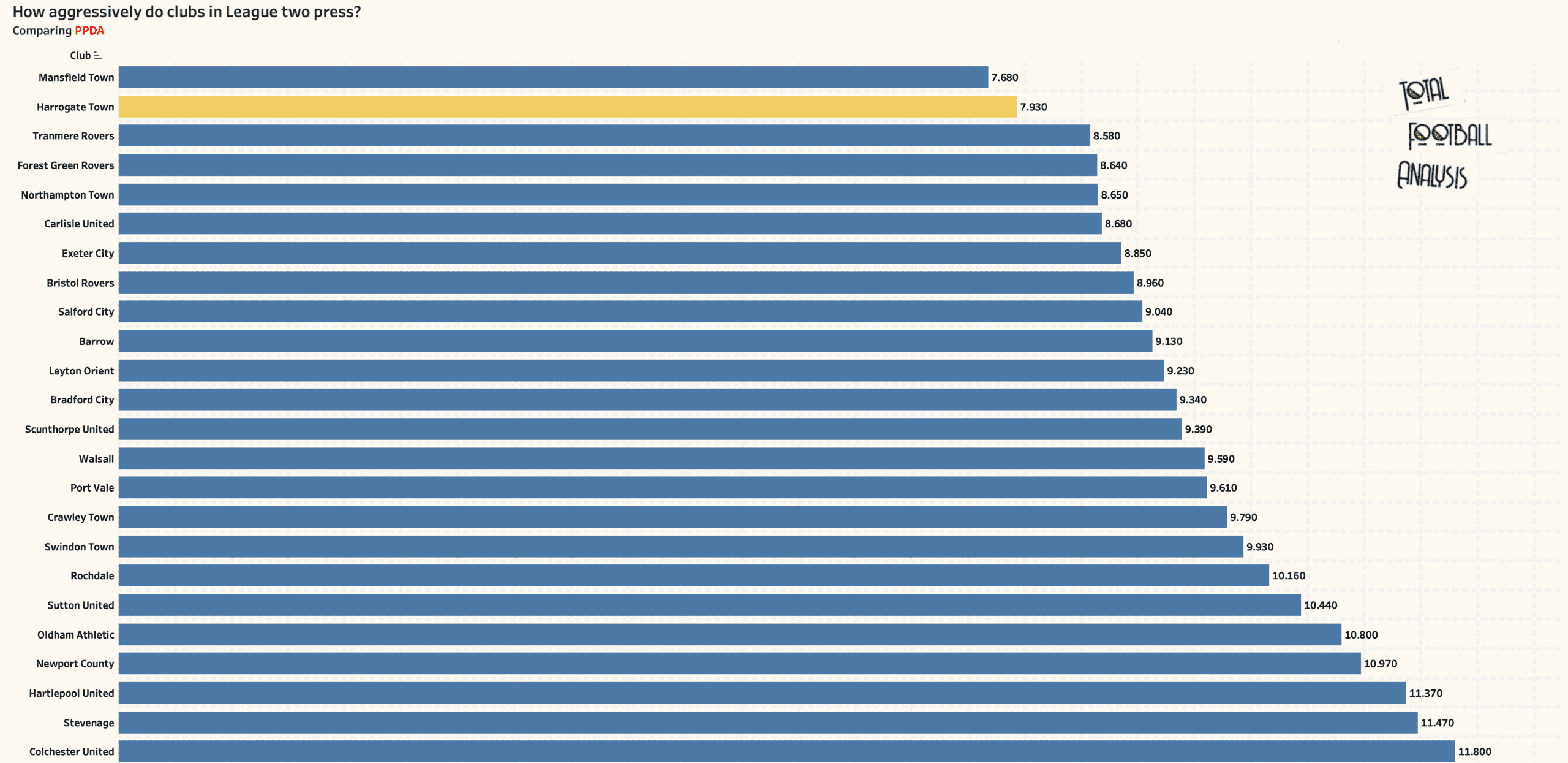
Now, let’s examine a couple of aspects of Harrogate’s play that make them especially interesting, starting with their defensive output.
Under Simon Weaver tactics, Harrogate plays a very modern and vertical style of football, emphasizing aggression in and out of possession of the ball.
This is clearly shown in this graph, which shows the PPDA (passes per defensive action) of all sides in League Two.
PPDA is a measure of how many passes a side allows their opposition to have before engaging them in a defensive action.
The lower the PPDA, the more aggressive that side is in pressing and trying to regain the ball.
As you can see, only Mansfield Town are more aggressive than Harrogate without the ball. Under Simon Weaver, Harrogate have averaged a PPDA of just 7.93 so far this season.
This is part of the secret of their success, as Harrogate looks to regain the ball as quickly as possible to transition quickly into their attacking phase and take advantage of the opposition while they are still out of shape and position.
Harrogate Town Progressive Passes Analysis
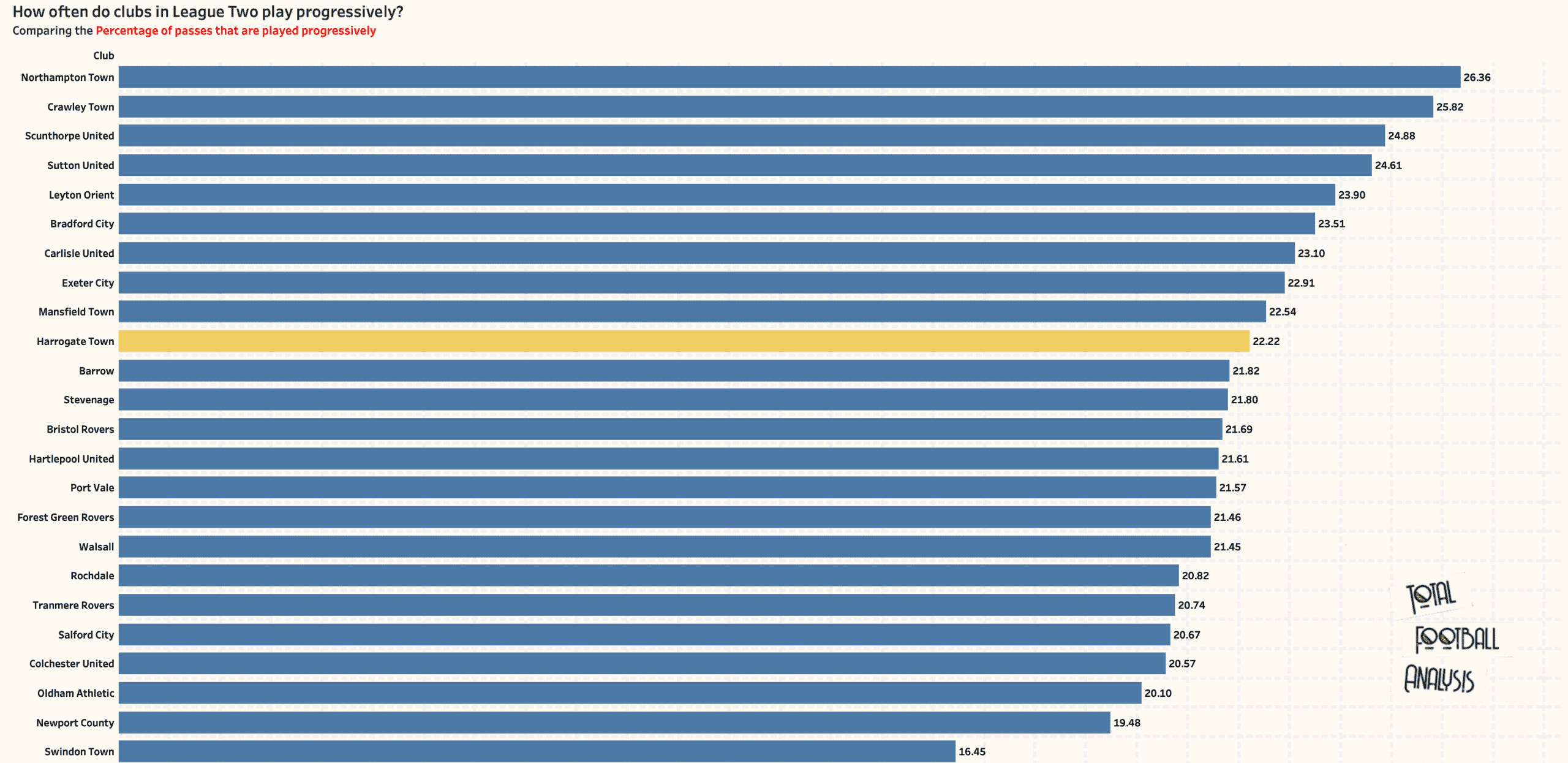
Next, we will look at how progressive Harrogate are in possession of the ball.
This graph shows the percentage of each team’s passes that Wyscout labels as progressive passes. It begins to build a picture of team style in possession in the same way that PPDA gives us insight into a team’s style out of possession.
Harrogate play 22.22% of their passes progressively.
This is interesting when taken in context with how aggressive they are out of possession in terms of their pressing.
While they look to win the ball back as high as possible, they do not necessarily then go straight for the jugular when they are in possession of the ball.
Instead, they will look to win the ball. If the opening is not there, they will retain possession in the opposition half of the field and look for opportunities to shift the focus and emphasis of their attack.
Again, they are quite modern in their approach in possession of the ball.
Harrogate Town Points Vs Expected Points Analysis
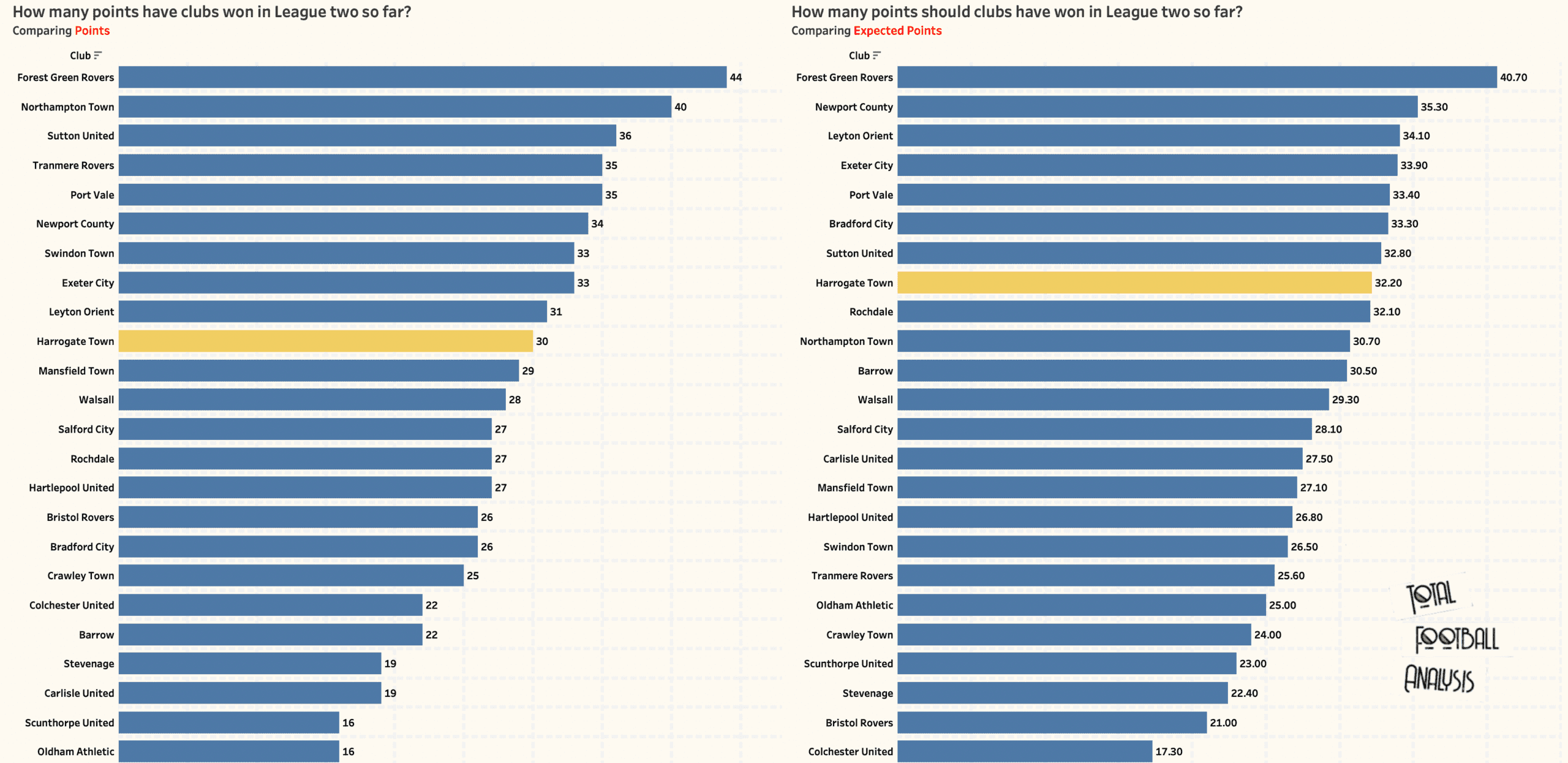
Finally, we will return to using expected data as part of our analysis as we compare points gained so far this season to the number of points we could have expected each side to have gained going by expected goals data.
On the left-hand side, we see the table as it stands at the moment using points, and Harrogate Town is in 10th position.
They are, however, within touching distance of a playoff place as things stand.
The table on the left using expected points, however, tells a different story and Harrogate are expected to have won 2.2 points more than they actually have.
These points, combined with expected points for the rest of the league, would see Harrogate move up two positions to eighth place, even closer to a place in the playoffs for promotion to League One.
Conclusion
As far as lower-league coaches in England go, Simon Weaver’s coaching style is fascinating and relatively unheralded.
The job that he has done since becoming player-manager at Harrogate Town more than a decade ago has seen the club reach heights that they had never come close to previously.
More impressively, though, they are doing so on a relatively small budget while playing an exciting and progressive brand of football.
The situation at Harrogate, with Weaver’s dad acting as chairman, makes it slightly more complicated, and he is perhaps less likely to look for a change of club to capitalise on his success.
What is sure, though, is that under Weaver, Harrogate Town are one of the sides to watch in League Two, and they are likely to remain so for the rest of the season.






Comments